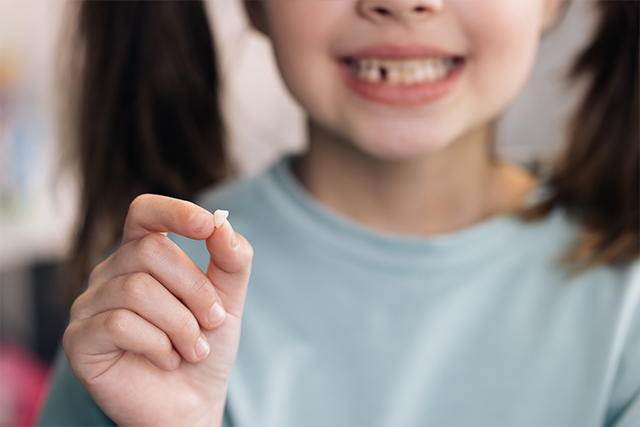Does My Child Need to Lose Their Baby Teeth Before Getting Orthodontic Treatment?


Long Beach, CA – Braces are commonly a rite of passage during the adolescent years. Who doesn’t conjure up a mouth full of metal when reminiscing about their awkward teenage days? While we often think of teenagers in braces, most people are unaware that the recommended time to first see an orthodontist is age seven.
Importance of Age Seven
Starting a relationship with an orthodontist at seven allows the orthodontist to begin monitoring how the smile is taking shape. They can ensure the baby teeth are falling out correctly and that the child can speak and chew properly. But most importantly, the jaws will still be growing. The orthodontist can help guide the growth of the jaws to ensure that there is adequate space for permanent teeth.
Many parents may think this is too young and plan to wait until the baby teeth have all fallen out to take their child to an orthodontist. While it’s never too late to get a straighter smile, starting after the baby teeth have all fallen out and permanent teeth erupted may make treatment harder than it needs to be. The reason for that is that once jaw growth is complete, there is less opportunity to make space for teeth to erupt or to guide jaw development. By accomplishing these goals with early interventive treatment, we can reduce the severity of the malocclusion and often eliminate the need for teeth extractions and jaw surgery later on.
Two-phase Orthodontic Treatment
Your child’s first orthodontic visit will include a comprehensive look at their current smile, as well as what is developing beneath the gums. The orthodontist can determine if the jaws are growing properly or if there are any growth discrepancies that need to be corrected before permanent teeth erupt.
If the orthodontist sees a need for treatment, this treatment is divided into two phases. The first phase will help guide the growth of the jaw(s) to ensure proper space for all of the permanent teeth. This phase often involves the use of appliances, such as palatal expanders, and limited braces on the front teeth. Once the ideal jaw growth has been achieved, the appliances and/or braces will be removed and the patient will be monitored biannually until all the permanent teeth have erupted. At that time, the patient will be evaluated for Phase II. The second phase uses braces or aligners to align the teeth and rubber bands for bite correction. Because the major jaw discrepancies have been addressed in Phase I, Phase II is quicker, more effective, and easier on the patient from a comfort standpoint.
Schedule a Complimentary Consultation
If your child is older than seven and hasn’t had a consultation with an orthodontist yet, call HD Orthodontics to schedule one. While not every child will require orthodontic treatment at this age, a consultation can ensure that when treatment is indicated, it can begin at precisely the right time to have the most impact. For those children not ready to start treatment, we invite them to be part of the HD Orthodontics Next Wave Kids Club so we can monitor their growth, development and dental eruption until the time is right.
HD Orthodontics treats patients of all ages, beginning at seven up to adults in their eighties. With a variety of treatments to choose from and a talented team ready to walk with your child every step of the way, HD Orthodontics is your orthodontic family.

